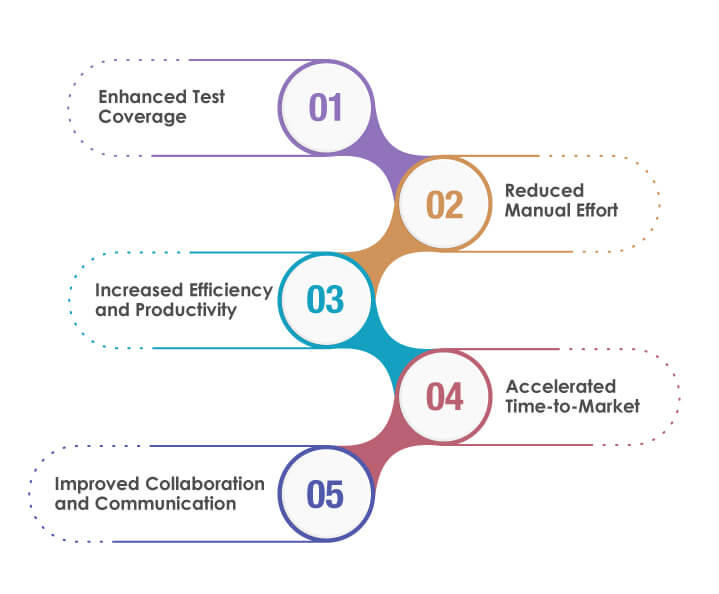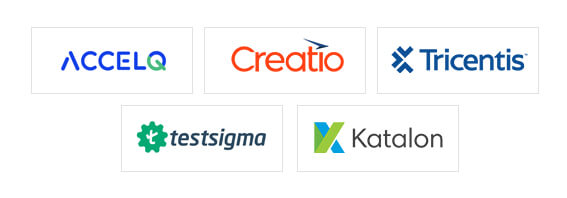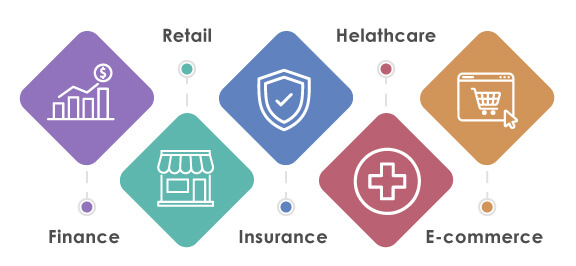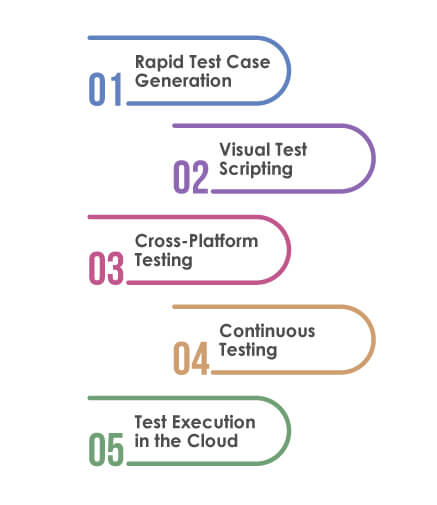Published: 27 Jul 2023
A Comprehensive Guide to Getting Started with Low Code Test Automation
Last Updated: 14 Dec 2023
Table of Contents
- What is Low Code?
- Introduction to Low-code Test Automation
- Benefits of Low-code Test Automation
- Popular Low-code Test Automation Tools
- Limitations of Low-code Test Automation
- Where is Low-code Application Testing Used?
- Real-World Examples of Low Code Test Automation
- Conclusion
- Why Choose TestingXperts for Low-code Testing?
According to projections by the U.S. Department of Labor, the global shortage of software engineers could reach a staggering 85 million by 2030. And in a world where software development cycles are shrinking, organizations face increasing pressure to deliver high-quality applications quickly. This demand for agility has led to the rise of low code development, a methodology that allows applications to be built rapidly with minimal hand-coding.
As technology continues to evolve, traditional software development practices often struggle to keep up with the demands of modern businesses. Low code development is an approach that allows applications to be created with minimal hand-coding, empowering developers to build applications using intuitive drag-and-drop interfaces and pre-built components visually. It offers a faster and more efficient way to develop software, enabling organizations to meet the growing demand for innovative applications.
What is Low Code?

Before starting with low code test automation, let us understand what low code is. Low code is a methodology that enables application development and testing with minimal traditional coding. Instead of writing lines of complex code, low code platforms offer intuitive visual interfaces and pre-built components, allowing developers to design and assemble applications rapidly.
This approach allows businesses, users, and professional developers to collaborate in building applications. It reduces the time and effort required for development, enabling faster iterations and more responsive solutions. Low-code platforms bridge the gap between business requirements and IT capabilities by leveraging drag-and-drop interfaces, pre-defined logic, and visual workflows.
Introduction to Low-code Test Automation

Now that we have a basic understanding of low code, let us understand the relationship between low code and test automation. Low code test automation combines the benefits of low code development with the power of automation to streamline the software testing process.
Traditionally, testing applications have been time-consuming and labor-intensive, often prone to human error. However, with low code test automation, organizations can automate the testing process, significantly reducing manual effort and ensuring consistent and reliable results. Organizations can use specialized tools and frameworks to build automated test suites that execute test cases, simulate user interactions, and validate application functionality. This approach streamlines the testing efforts, improves efficiency, and enhances overall software quality.
Moreover, low code test automation fosters collaboration between development and testing teams. By aligning their efforts, teams can detect and resolve issues early in the development lifecycle, leading to faster bug fixes and improved overall application quality. This approach also facilitates rapid feedback loops, allowing teams to iterate quickly and deliver value to end users.
Benefits of Low-code Test Automation

Low-code test automation offers numerous benefits for organizations seeking to optimize software testing efforts. By combining the power of low code development and test automation, businesses can achieve significant productivity gains, improve test coverage, and enhance overall software quality. Following are some of the benefits you should know about:
Enhanced Test Coverage
Low code test automation enables organizations to achieve excellent test coverage, ensuring that critical scenarios and edge cases are thoroughly tested. Teams can allocate resources more efficiently by automating repetitive and time-consuming tasks like regression testing. This allows testers to focus on complex and exploratory testing, resulting in more comprehensive coverage and higher confidence in the application’s quality.
Reduced Manual Effort
One of the significant advantages of low code test automation is the reduction in manual testing efforts. Manual testing is prone to human error and can be time-consuming, leading to delays in the software development lifecycle. Organizations can automate repetitive testing tasks with low code test automation, reducing the dependency on manual efforts. This not only saves time but also improves the accuracy and consistency of the testing process.
Increased Efficiency and Productivity
Low code test automation significantly improves efficiency and productivity by automating the testing process. Testers can execute test cases more quickly and obtain faster feedback on application behavior. It enables faster bug detection and resolution, reducing the time required for software development cycles. With enhanced efficiency, development and testing teams can work together seamlessly, leading to streamlined collaboration and increased productivity.
Accelerated Time-to-Market
In today’s competitive landscape, time-to-market is critical for success. Low-code test automation helps accelerate software delivery by reducing testing cycles and eliminating bottlenecks. With faster and more efficient testing, organizations can expedite the release of high-quality applications. This allows businesses to seize market opportunities quickly, meet customer demands, and gain a competitive edge in their respective industries.
Improved Collaboration and Communication
Low code test automation fosters collaboration and communication between development and testing teams. By aligning their efforts, these teams can work together to identify and resolve issues early in the development lifecycle. This collaboration leads to faster bug fixes, improved overall application quality, and enhanced customer satisfaction. Additionally, low code test automation promotes rapid feedback loops, enabling iterative development and fostering a culture of continuous improvement.
Popular Low-code Test Automation Tools

When implementing low code test automation, having the right tools is crucial. Several low-code test automation tools are available, each offering unique features and capabilities. Let us look into some of these tools:
ACCELQ
It is a comprehensive low-code test automation platform designed to accelerate software testing. With its intuitive visual interface, ACCELQ enables testers to build and execute automated test cases without extensive coding. It offers codeless test automation, AI-powered self-healing tests, and robust reporting and analytics. ACCELQ empowers organizations to achieve faster test creation, execution, and maintenance, improving software quality.
Creatio
It is a low-code platform providing comprehensive application development and testing solutions. With its integrated low-code test automation capabilities, Creatio allows users to build and execute automated test cases seamlessly. It offers visual testing workflows, test script creation without coding, and efficient test execution across multiple environments. Creatio enables organizations to enhance the speed and quality of their application testing while maintaining a user-friendly low-code development environment.
Tricentis Tosca
It is a renowned low-code test automation tool that combines low-code development with comprehensive testing capabilities. It provides a unified platform for end-to-end test automation, including functional, regression, and performance testing. With Tricentis Tosca, organizations can leverage visual modelling and scriptless test automation to achieve efficient and scalable testing processes. The tool offers advanced features like risk-based testing, test data management, and integrations with popular test management tools.
Testsigma
It is a cloud-based low-code test automation platform that simplifies test automation for organizations. With its low code interface, Testsigma allows users to create and execute automated test cases without extensive programming knowledge. It offers codeless test creation, AI-powered self-healing tests, and seamless integration with popular CI/CD tools. Testsigma enables organizations to achieve faster time-to-market by streamlining their test automation efforts.
Katalon
It is a widely used low-code test automation tool that caters to organizations of all sizes. With its intuitive interface and robust automation capabilities, Katalon empowers testers to build and execute automated test cases efficiently. It offers many features, including scriptless test creation, data-driven testing, and integrations with popular CI/CD tools. Katalon simplifies the test automation process, enabling organizations to achieve faster releases and improved software quality.
Limitations of Low-code Test Automation

While low code test automation offers numerous benefits, it is essential to be aware of the challenges and limitations associated with this approach. Understanding these challenges will help you develop strategies to overcome them and maximize the effectiveness of your testing efforts:
Limited Customization Options
Low-code platforms often provide pre-built components and visual interfaces that simplify application development. However, this can sometimes limit the level of customization available for testing purposes. As a result, testers may face challenges when creating complex test scenarios or dealing with unique testing requirements. Evaluating the flexibility and extensibility of a low-code test automation tool is crucial to ensure it aligns with your specific testing needs.
Learning Curve and Skill Requirements
While low-code platforms aim to simplify the application development process, there is still a learning curve associated with mastering these tools. Testers and QA professionals may need to acquire new skills and undergo training to leverage low-code test automation effectively. It is essential to allocate time and resources for skill development and provide adequate training to ensure a smooth transition to the low code testing approach.
Compatibility and Integration Challenges
Integrating low code test automation tools with existing systems, frameworks, or test management tools can be challenging. Compatibility issues may arise when integrating low-code test automation with complex enterprise environments. Organizations need to carefully assess the compatibility and integration capabilities of their chosen low-code testing tool and ensure seamless collaboration with existing testing infrastructure.
Limitations in Test Coverage
While low code test automation can enhance test coverage, specific scenarios or edge cases may be challenging to automate. Complex business rules, advanced validations, or intricate data scenarios may require additional customization or coding, which may partially defeat the purpose of low-code test automation. Identifying such limitations early on and devising alternative strategies, such as leveraging code-based testing frameworks or hybrid approaches, is crucial to address these scenarios effectively.
Maintenance and Upgrades
Low-code test automation tools require regular maintenance and upgrades to keep pace with evolving technology and ensure optimal performance. As low-code platforms continue to grow, updates and new releases may introduce changes that affect existing test automation scripts or require adjustments. Testers must allocate resources and plan for ongoing maintenance and upgrades to ensure the long-term sustainability of their low code test automation efforts.
Where is Low-code Application Testing Used?

Low-code application testing has gained significant traction across various industries, offering organizations a powerful approach to enhance their software quality and delivery. Understanding the application of low-code testing in these sectors will provide valuable insights into its versatility and potential for success:
Finance
In the finance industry, where accuracy, security, and regulatory compliance are paramount, low-code application testing plays a crucial role. Financial institutions leverage low-code testing to ensure the reliability and integrity of their banking systems, investment platforms, and financial applications.
It enables thorough testing of critical functionalities such as transaction processing, data encryption, and user authentication. By employing low-code testing, finance organizations can streamline their testing processes, mitigate risks, and provide customers with secure and seamless digital experiences.
Retail
The retail industry relies heavily on technology to deliver exceptional customer experiences and drive sales. Low-code application testing helps retailers ensure the performance, usability, and reliability of their e-commerce platforms, inventory management systems, and customer relationship management (CRM) applications.
By thoroughly testing the checkout process, inventory updates, and user interactions, retailers can identify and resolve issues before they impact the customer experience. Low-code testing also enables retailers to adapt quickly to market demands, roll out new features, and stay competitive in the fast-paced retail landscape.
Insurance
In the insurance sector, low-code application testing enables organizations to validate the functionality and accuracy of their insurance systems, policy management platforms, and claims processing applications.
Through comprehensive testing, insurers can ensure that critical operations, such as underwriting, policy issuance, and claims handling, are error-free and efficient. Low-code testing allows insurers to simulate real-world scenarios, test complex calculations, and validate business rules, leading to improved accuracy, faster claims processing, and enhanced customer satisfaction.
Healthcare
Low-code application testing is paramount in the healthcare industry, where software reliability and patient safety are critical. Healthcare organizations leverage low-code testing to validate electronic health record (EHR) systems, medical imaging applications, telehealth platforms, and healthcare management solutions. By rigorously testing functionalities such as data integration, patient record management, and medical device interoperability, healthcare providers can ensure seamless and secure healthcare delivery. Low-code testing also helps organizations comply with industry regulations, protect patient privacy, and enhance the overall quality of care.
E-commerce
E-commerce platforms are the backbone of online businesses, and low-code application testing plays a vital role in ensuring their functionality, performance, and security. Organizations can thoroughly test features such as product catalog management, shopping cart functionality, payment gateways, and order processing by leveraging low-code testing. It helps identify and resolve user experience, transaction processing, and system integration issues. Low-code testing enables e-commerce businesses to deliver reliable and user-friendly online shopping experiences, increasing customer satisfaction and conversion rates.
Real-World Examples of Low Code Test Automation

Here are some real-world examples of how low code test automation is transforming software development:
Rapid Test Case Generation
Low code test automation tools leverage artificial intelligence and machine learning algorithms to automatically generate test cases based on the application’s user interface and business logic. This significantly speeds up the test design phase and reduces the effort required to create comprehensive test coverage.
Visual Test Scripting
With low code test automation, testers can create test scripts using a graphical interface, eliminating the need for traditional coding. This empowers business users and subject matter experts to contribute to the testing process without requiring programming skills. By visually representing the test scenarios, organizations can bridge the gap between technical and non-technical stakeholders, fostering collaboration and accelerating the feedback loop.
Cross-Platform Testing
Low code platforms often support multiple target platforms, such as web, mobile, and desktop applications. Testing these applications across various platforms can be time-consuming. Low-code test automation tools simplify this process by providing built-in cross-platform testing capabilities. Testers can create test scripts once and execute them across multiple platforms, ensuring consistent functionality and user experience.
Continuous Testing
In modern software development practices, continuous integration and delivery (CI/CD) pipelines are critical for rapid and frequent software releases. Low-code test automation seamlessly integrates with CI/CD workflows, enabling organizations to automate testing at each stage of the development process. This ensures early detection of defects, reduces the risk of regression issues, and facilitates faster feedback for developers.
Test Execution in the Cloud
Low code test automation tools offer the flexibility to execute tests in the cloud. This eliminates the need for dedicated test environments and reduces infrastructure costs. With cloud-based execution, organizations can quickly scale their testing efforts, accommodating the growing demands of complex low-code applications.
Conclusion
In conclusion, low-code test automation offers a powerful solution for streamlining software testing processes and accelerating time-to-market with enhanced quality.
By combining the flexibility of low-code development with the efficiency of test automation, organizations can improve test coverage, reduce manual effort, increase efficiency and productivity, accelerate software delivery, and foster collaboration between teams.
It is a strategic approach that empowers organizations to stay competitive, innovate faster, and deliver exceptional digital experiences to customers. By partnering with TestingXperts for low-code test automation services, businesses can drive success and achieve higher levels of software quality. To know more, contact our experts today.
Why Choose TestingXperts for Low-code Testing?

TestingXperts is a trusted partner with years of experience and expertise regarding low-code test automation services. Our comprehensive suite of test automation solutions is specifically designed to address the unique challenges of low-code applications. Here are the key differentiators that set us apart from our competitors:
Experience in Low-code Test Automation
TestingXperts has experience of delivering successful test automation solutions for low-code applications. With years of experience in the field, our testing professionals have deep domain expertise and hands-on experience in implementing test automation strategies tailored to low-code platforms. We understand the intricacies of low-code environments, enabling us to provide targeted and effective test automation services.
Specialized Test Automation Frameworks
We have developed test automation frameworks for low-code applications. These frameworks leverage cutting-edge technologies and best practices to streamline the test automation process, ensuring maximum coverage and efficiency. Our frameworks are continuously updated to keep pace with the evolving low-code landscape, enabling us to deliver high-quality test automation solutions effectively.
Accelerated Test Automation Delivery
At TestingXperts, we understand the importance of speed and efficiency in today’s fast-paced software development cycles. Our test automation methodologies and frameworks are optimized to deliver accelerated results. By leveraging automation tools and intelligent algorithms, we reduce the time and effort required for test automation script creation, execution, and maintenance. This enables you to achieve faster time-to-market while maintaining superior quality.
Comprehensive Test Automation Coverage
We emphasize comprehensive test automation coverage to ensure the thorough validation of your low-code applications. Our test automation services cover various dimensions, including functional testing, regression testing, integration testing, performance testing, security testing, and cross-platform testing. We help you identify and resolve issues early in the development cycle by addressing all critical testing aspects, ensuring robust and reliable low-code applications.
Seamless Integration with CI/CD Pipelines
Our experts understand the importance of seamless integration with continuous integration and continuous delivery (CI/CD) pipelines. Our test automation solutions seamlessly integrate with your existing development workflows, enabling continuous testing at each stage of the software development lifecycle. By automating the testing process, we ensure early detection of defects, faster feedback for developers, and reduced risk of regression issues, supporting your CI/CD initiatives.